Qorikancha and Cusco
19 October, 2007, 01:45 pm in "Peru"
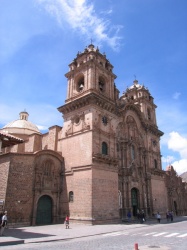 Since we have 6 hours of classes a day, we haven't had much time to sight see. However, today we went to Qorikancha with our practice teachers. Qorikancha was an important Incan temple which the Spanish built the Convent of Santo Domingo on top of. The first 10 feet of walls are Incan then the rest is Spanish. Parts of the Incan walls were knocked down to make the halls of the churches and Spanish colonial arches rise out of the huge Incan stone work. There are rooms of Spanish religious paintings and other rooms containing artwork about Incan cosmology and religious beliefs.
Since we have 6 hours of classes a day, we haven't had much time to sight see. However, today we went to Qorikancha with our practice teachers. Qorikancha was an important Incan temple which the Spanish built the Convent of Santo Domingo on top of. The first 10 feet of walls are Incan then the rest is Spanish. Parts of the Incan walls were knocked down to make the halls of the churches and Spanish colonial arches rise out of the huge Incan stone work. There are rooms of Spanish religious paintings and other rooms containing artwork about Incan cosmology and religious beliefs. 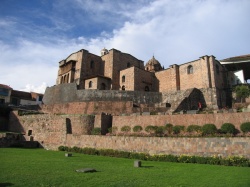
An Incan fountain stone is in the center surrounded by Spanish arches which are in front of Incan chambers. In the back are terraces filed with flowers and paths.
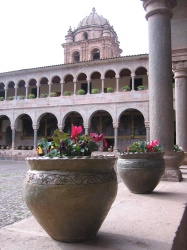
In the past few days I've learned a lot about Cusco my practice teacher. She's lived in Cusco for most of her life and told me how her father told her there used to be 2 crystal rivers and lots of wild vicunas. Now the city has grown, the rivers have shrunk and what's left has become poluted. She learned Quechua from her grandparents with whom she'd spend vacations with as a child. Her parents refused to teach her Quechua, a common occurance, leading to the diminishing of the language. However, most of the street names seem to be in Quechua around here and I think there is a growing effort to preserve it, as well as growing pride in being a Quechua speaker.
Cusco would look very European, if it didn't have all the Incan walls and Peruvian handcrafts. Narrow cobblestone streets lead up the hills and around the center.
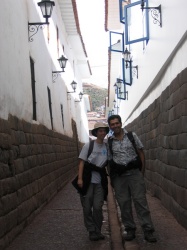
We really liked the use of cactus growing on adobe walls as a theft deterant.
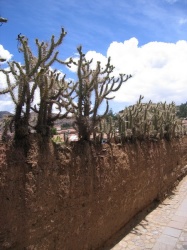
There are lots of buildings with doors leading to courtyards. The Plaza de Armas has cafes overlooking the plaza and swanky restaurants and shops selling fine clothing made from alpaca.
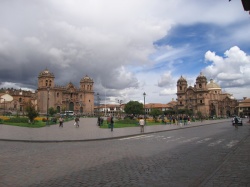
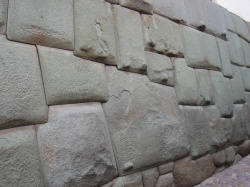
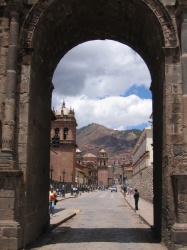
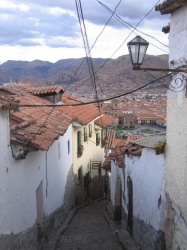
There are tons of tourists compared to the rest of Peru, even though it is off season. I'm glad we chose Cusco to learn Spanish in.
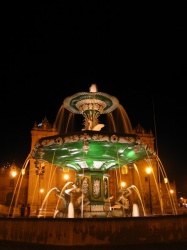
Comments
- Comments
Powered by My Blog 1.69. Copyright 2003-2006 FuzzyMonkey.net.
Created by the scripting wizards at FuzzyMonkey.net..
(Code modified by Rowshan Dowlatabadi)
Created by the scripting wizards at FuzzyMonkey.net..
(Code modified by Rowshan Dowlatabadi)

